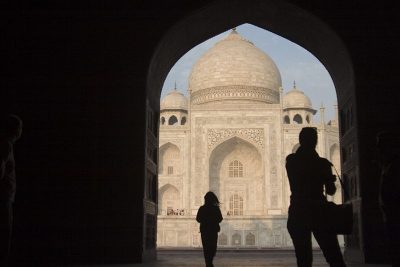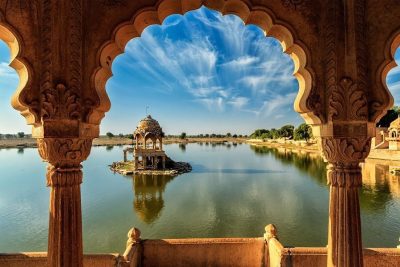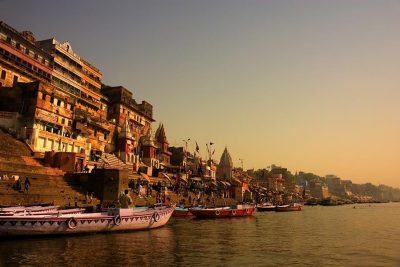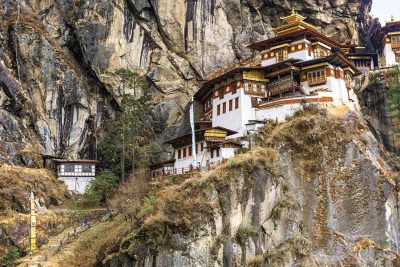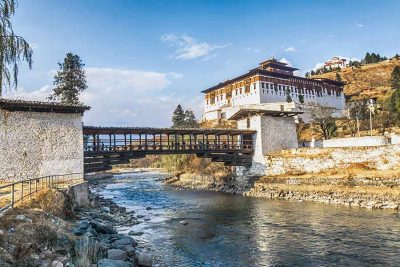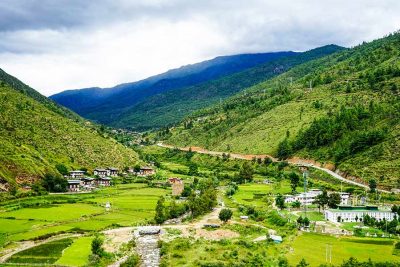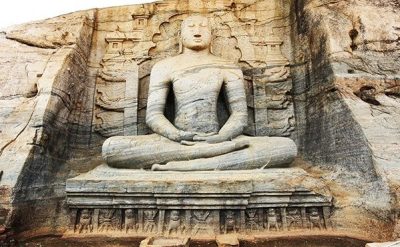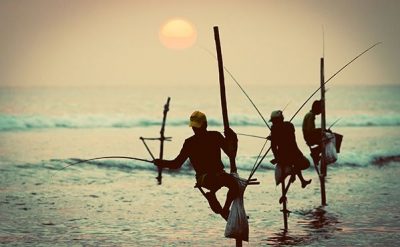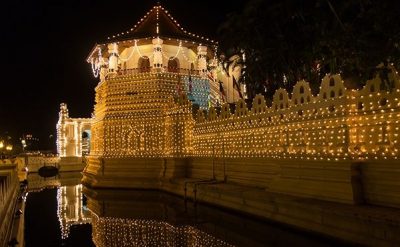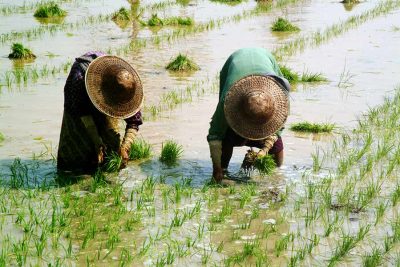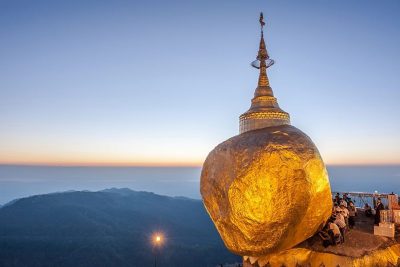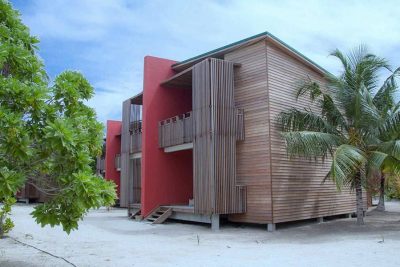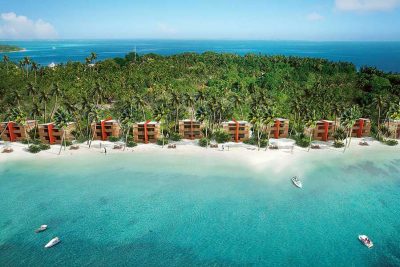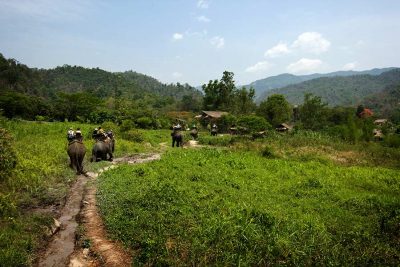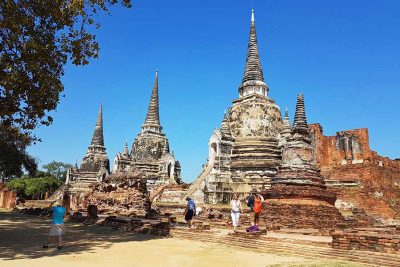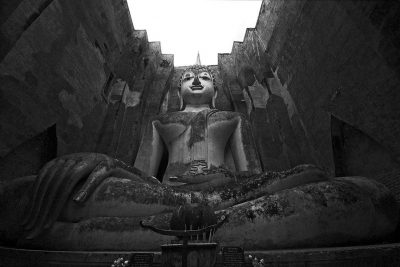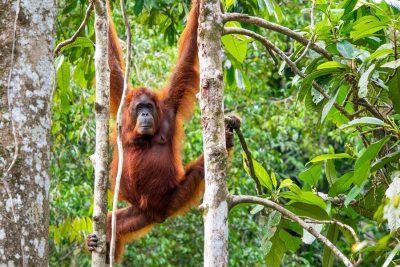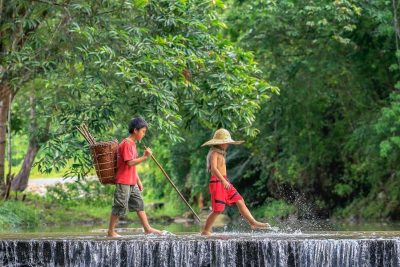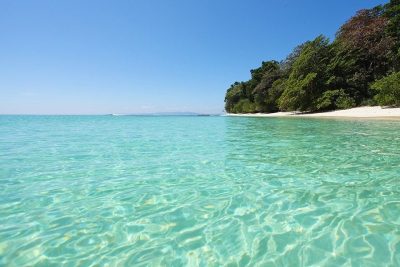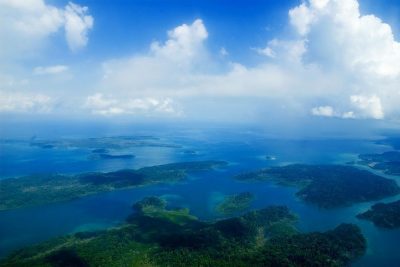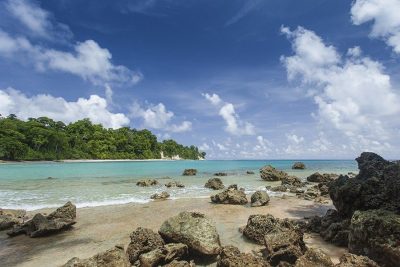WHERE TO GO ON HOLIDAY
Travel Guide: Asia
If you are looking for ideas for travel or a destination for your next trip to Asia, it is important to find out well and choose the destination to go basing on the climate, because depending on the period of departure there could be unfavourable weather conditions, due to monsoons, rain or low temperatures. Asia expands into all three astronomical areas of the northern hemisphere: glacial, temperate and torrid. As a result, it is also the continent with the greatest climatic contrasts.
Another opportunity to visit Asia could be during some local festivals, because they are certainly the most interesting moments that best represent the cultural liveliness and richness of a country with their mythological, historical and spiritual meanings.
It is therefore important to know the climatic variations of the Asian countries, which are very different from the European ones, and which substantially correspond to 4 different types of climate:
- equatorial and monsoonal climate (in the Indian and Indochinese peninsulas, it is the jungle environment)
- arid climate (it is the environment of the Gobi desert and the Arabian Peninsula)
- temperate climate (Mediterranean and Pacific coast)
- cold and snowy climate (in the north, it is the environment of the steppe, tundra and taiga)
Conscious Journeys is a specialized tour operator in Asia that offers responsible tourism itineraries in several Asian countries, including India, Bhutan, Sri Lanka, Burma, Maldives, Thailand, Malaysian Borneo and the Andaman Islands. Among the different options it offers beach holidays for summer or off-season holidays and organized group tours.
In the periods of greatest tourist travel you can also consult the page dedicated to New Year’s Travel and Summer Holidays.
INDIA
India is a very vast country and, a bit emphasizing, it is said that all climates are present, in reality in most of the country the climate is tropical and subject to monsoons, which determine a dry and rainy season. The rains are more or less intense and lasting depending on the areas, but usually the period more subject to the rains is from July to September, except in the south-east where the monsoon continues until the end of the year. The hottest period normally runs from April to mid-June, before the arrival of the monsoon, so the real summer period corresponds to spring on the calendar.
To simplify, we divide the Indian climate into four distinct areas:
Himalayas
At the highest altitudes in the Himalayas, the climate is mountainous. The temperature drops as the altitude increases, but it varies according to the slopes: it is higher along the southern side, while it becomes lower in the inland areas and on the northern slopes.
North India
In this vast northern area of India, which almost completely coincides with the Indo-Ganges plain and which affects all travellers in Rajasthan, the climate has the following characteristics: relatively cool winter, especially in the most northern area, however with January averages below 20 degrees (except along the coast of Gujarat where it can slightly exceed 20 degrees); very hot period from March to May, before the arrival of the monsoon; weak to moderate to relatively intense summer monsoon, however with annual rainfall below 1400 millimetres and with withdrawal of the monsoon by mid-October.
North-East India
In this north-eastern area of India, which includes the city of Calcutta up to Sundarbans and Bangladesh, the climate is more humid and less torrid than in the remaining northern areas analysed above. Here, too, the winter is dry and very mild with average temperatures in January just below 20 degrees.
South India
In this area, which includes all of central-southern India except the west coast towards the Kerala region and the heights of the western Ghati, the climate is tropical, with the January average generally exceeding 20 degrees, but for the rest there are differences not insignificant: in the north and inland part of the south, the monsoon lasts from June to October, while along the south-east coast, near Tamil Nadu, the monsoon is at its peak at the end of the year, between October and December.
BHUTAN
In Bhutan the climate is influenced by the altitude: it is subtropical in the plains, and becomes progressively colder as you climb the Himalayan slopes and is influenced by the summer monsoon, which brings rain and widespread cloudiness for almost six months a year.
In the hilly and mountainous areas the climate becomes progressively milder, with relatively cold and dry winters, and hot and rainy summers, which receive monsoon rains on the southern slopes, while in some inland valleys the summer rains, although present, become less intense.
Above 2000 metres, winter begins to be rather cold, often with sub-zero nights. In the capital Thimphu, which is located in a valley at an altitude ranging between 2200 and 2600 metres, the average temperature goes from about 5 degrees in January to 20 degrees in the June-August period.
SRI LANKA
In Sri Lanka, the former Ceylon, the climate is tropical, warm and humid all year round (the country is located just north of the Equator), marked by monsoons, which determine the pattern of rainfall. Also the inland relief, which is more prominent in the central-southern part of the island, determines a different intensity and distribution of rainfall between the different areas: the rainiest areas are the south-western mountainside and the coastal area where the capital Colombo is located, while the least rainy areas are the north-western and south-eastern coast.
Rainfall in Sri Lanka, as it is generally the case in countries with tropical climates, occurs mainly in the form of showers or thunderstorms.
There are two periods of maximum rainfall: the first, in April and May, affects only the south-west and inland areas, while the second, between October and December, and due to the returning monsoon, affects the whole country. During the summer, the south-west monsoon prevails, but it brings the bulk of the rainfall in India, and in Sri Lanka it brings abundant rainfall only on the south-west coast and inland mountainous areas, while the eastern areas such as the beaches of Trincomalee are not affected.
From March to May, before the arrival of the monsoon, there is an increase in temperature, more sensitive in the central-northern part of the country.
BURMA
In Burma (or Myanmar) the climate is generally tropical, with the rainy season usually from mid-May to October due to the south-west monsoon, the cool, dry season from November to mid-February, and a pre-monsoonal warm season from mid-February to mid-May. The following climatic areas can be distinguished: Two mountain strips to the west and east (the Arakan Mountains and the Shan Plateau), with a mild climate, with abundant rainfall, sometimes torrential, in the monsoon season, in the west, and moderate in the east. During the winter months it is cold at night. A central belt, which also includes the capital, with a tropical climate, but cool in winter in the north, with abundant, but not exceptional, rainfall during the monsoon season. In the north, winter is rather cool, at least by tropical standards. An inland area sheltered from the monsoon, and therefore almost arid, where Mandalay is located, which becomes very hot in the pre-monsoonal season.
MALDIVES
The Maldives have a tropical climate, warm all year round and is influenced by the monsoons. The south-west monsoon blows from the end of April to September, is felt more in the northern islands and is accompanied by the wind, which can make the sea rough and therefore can discourage activities such as diving; it is also accompanied by more humidity and more frequent cloudiness. The north-eastern monsoon blows from October to December, it is quieter and more limited to bringing showers and thunderstorms in the afternoon or evening, especially in the southern atolls. The driest period, outside of the two monsoons, runs from January to April, and it is felt more in the northern atolls.
Temperatures in the Maldives are stable: maximums are around 30 degrees and minimums are around 25 degrees for most of the year.
THAILAND
In Thailand’s vast northern inland plain, and in the valleys of the hilly north-west, the climate is warm all year round, except in winter, when it is sunny but cool enough at night, so that temperatures drop to around 15 degrees in the centre and 12/13 degrees in the north. When masses of cold air come down from China, in northern cities like Chiang Mai in December and January the nighttime temperature can drop as low as 5°C and in some cases even below.
In the capital Bangkok the climate is warm all year round. Between mid-November and January the weather is good, with often clear skies. The maximum temperatures are around 30/32 degrees, the minimum ones are around 20/22 degrees. In fact it is very hot even though it’s winter period. Starting from February the temperatures even begin to increase; the weather remains good, even if every now and then some brief downpours break out.
MALAYSIA
In Malaysia the climate is equatorial, i.e. warm, humid and rainy all year round. Temperatures are stable and high in all months, with a slight decrease between November and January, when the highs drop to 29 degrees, and a slight increase (which however with high humidity is felt) between March and August, when the maximums are around 33 degrees and the minimums around 25 degrees. The rains are caused by the monsoons, but Malaysia, being close to the equator and surrounded by the sea, there is no real dry season. Moreover, rainfall, as usually happens in tropical countries, is quite irregular from one year to the next. To the east, Borneo is even rainier than peninsular Malaysia, especially in the western part of Brunei (state of Sarawak), where it exceeds 4000 millimetres per year. The rainiest area is the western one, well exposed to the north-east monsoon and therefore very rainy from October to March, with more than 300 mm per month, and as much as 700 mm in January, in a period when it practically rains every day. In the other months, it’s a little better, therefore they are the best ones.
ANDAMAN ISLANDS
The climate here is warm all year round, with minimum temperatures around 24/25 degrees and maximum temperatures around 28/30 degrees and a slight increase in temperature between March and May.
In the Andaman Islands, in the Gulf of Bengal, the rainfall is a little more consistent, ranging from 2500 to 3000 millimetres per year. Rainfall is abundant and the sky is a bit cloudy from May to November.
JOURNEY TO ASIA
For convenience, therefore, it is useful to divide these itineraries according to the optimal departure period, to be able to enjoy the country to know in complete serenity, without the difficulties that a hostile climate can present.

Where to go on holiday in January
Burma:
Andaman:
India:
- The best of South India
- The holy Ganges
- The golden triangle and deserts of Rajasthan
- The essence of North India
- Rural Rajasthan
- Unexplored Kerala
- Tamil Nadu the land of temples
Maldives:
Thailand:

Where to go on holiday in January
Burma:
Andaman:
India:
- The best of South India
- The holy Ganges
- The golden triangle and deserts of Rajasthan
- The essence of North India
- Rural Rajasthan
- Unexplored Kerala
- Tamil Nadu the land of temples
Maldives:
Thailand:

Where to go on holiday in March
Bhutan
Burma
Andaman
India
- The best of southern India
- The holy Ganges
- The golden triangle and the deserts of Rajasthan
- The essence of Northern India
- Rural Rajasthan
- Unexplored Kerala
- Tamil Nadu the land of temples
Maldives
Malaysia
Thailand

Where to go on holiday in April
Bhutan
Andaman
Maldives
Malaysia
Sri Lanka
Thailand

Where to go on holiday in May
Bhutan
India
Sri Lanka
Maldives
Malaysia

Where to go on holiday in June
India
Sri Lanka
Malaysia

Where to go on holiday in July
India
Sri Lanka
Malaysia

Where to go on holiday in August
India
Sri Lanka
Malaysia

Where to go on holiday in September
Bhutan
India
Sri Lanka
Malaysia

Where to go on holiday in October
Bhutan
Burma
India
- The best of southern India
- The holy Ganges
- The golden triangle and the deserts of Rajasthan
- The essence of Northern India
- Rural Rajasthan
- Unexplored Kerala
- Tamil Nadu the land of temples
Sri Lanka

Where to go on holiday in November
Bhutan
Burma
Andaman:
India
- The best of southern India
- The holy Ganges
- The golden triangle and the deserts of Rajasthan
- The essence of Northern India
- Rural Rajasthan
- Unexplored Kerala
Thailand:

Where to go on holiday in December
Burma
Andaman:
India
- The best of southern India
- The holy Ganges
- The golden triangle and the deserts of Rajasthan
- The essence of Northern India
- Rural Rajasthan
- Unexplored Kerala


